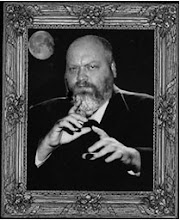The Autumnal Equinox is upon us...
Equal day and equal night, with a half moon to set the tone, as we move into the constellation of Libra...So many symbols converging in synchronicity it's almost ironic. In honour of this holy day let's take a look at the origins of its sanctity:
The tale of Mabon ap Modron, the Welsh God, (the "great son of the great mother"), also known as the Son of Light, is celebrated. The Equinox is also the birth of Mabon, from his mother Modron, the Guardian of the Outerworld, the Healer, the Protector, the Earth. Mabon was taken after he is a mere three nights old. Through the wisdom of the living animals -- the Stag, Blackbird, Owl, Eagle and Salmon -- Mabon is freed from his mysterious captivity. All the while Mabon had rested within his mother's womb; a place of nurturing and challenge. With strength and lessons gained within the magickal Outerworld (Modron's womb), Mabon is soon reborn as his mother's Champion, the Son of Light, wielding the strength and wisdom acquired during his captivity.
Also, the Equinox is the day of the year when the god of light, Lugh, is defeated by the god of darkness, Lugh's twin and alter-ego, Tanist. The night conquers day. The tales state that the Equinox is the only day which Lugh is vulnerable and the possibility of his defeat exists. Lugh stands on the balance (Autumn Equinox-Libra) with one foot on the goat (Winter Solstice-Capricorn) and the other on the cauldron (Summer Solstice-Cancer). He is betrayed by Blodeuwedd, the Virgin (Virgo) and transformed into an Eagle (Scorpio).
Two events occur rapidly with Lugh's defeat. Tanist, having beaten Lugh, now takes over Lugh's place both as King of our world and lover to the Goddess Tailltiu. Although Tanist now sits on Lugh's throne, his official induction does not take place for another six weeks at Samhain, the beginning of Winter, when he becomes the Dark King, the Winter Lord, the Lord of Misrule. He mates with Tailltiu, who conceives, and will give birth nine months later (at the Summer Solstice) to her son, another incarnation of Tanist himself, the Dark Child.
Lugh's sacrifice represents not only the sun's dying power, but also the cycle of rebirth, his energy remaining within the corn we have since harvested. A incarnate (of Lugh) corn spirit was thought to specifically reside within the last stalk (or stock), which was traditionally dressed in fine clothes and decorations, or woven into a wicker man-shaped form. This symbolic decoration was then harvested and carried from the field to be burned with rejoicing for the spirits release and Lugh's upcoming rebirth.
The tale of Mabon ap Modron, the Welsh God, (the "great son of the great mother"), also known as the Son of Light, is celebrated. The Equinox is also the birth of Mabon, from his mother Modron, the Guardian of the Outerworld, the Healer, the Protector, the Earth. Mabon was taken after he is a mere three nights old. Through the wisdom of the living animals -- the Stag, Blackbird, Owl, Eagle and Salmon -- Mabon is freed from his mysterious captivity. All the while Mabon had rested within his mother's womb; a place of nurturing and challenge. With strength and lessons gained within the magickal Outerworld (Modron's womb), Mabon is soon reborn as his mother's Champion, the Son of Light, wielding the strength and wisdom acquired during his captivity.
Also, the Equinox is the day of the year when the god of light, Lugh, is defeated by the god of darkness, Lugh's twin and alter-ego, Tanist. The night conquers day. The tales state that the Equinox is the only day which Lugh is vulnerable and the possibility of his defeat exists. Lugh stands on the balance (Autumn Equinox-Libra) with one foot on the goat (Winter Solstice-Capricorn) and the other on the cauldron (Summer Solstice-Cancer). He is betrayed by Blodeuwedd, the Virgin (Virgo) and transformed into an Eagle (Scorpio).
Two events occur rapidly with Lugh's defeat. Tanist, having beaten Lugh, now takes over Lugh's place both as King of our world and lover to the Goddess Tailltiu. Although Tanist now sits on Lugh's throne, his official induction does not take place for another six weeks at Samhain, the beginning of Winter, when he becomes the Dark King, the Winter Lord, the Lord of Misrule. He mates with Tailltiu, who conceives, and will give birth nine months later (at the Summer Solstice) to her son, another incarnation of Tanist himself, the Dark Child.
Lugh's sacrifice represents not only the sun's dying power, but also the cycle of rebirth, his energy remaining within the corn we have since harvested. A incarnate (of Lugh) corn spirit was thought to specifically reside within the last stalk (or stock), which was traditionally dressed in fine clothes and decorations, or woven into a wicker man-shaped form. This symbolic decoration was then harvested and carried from the field to be burned with rejoicing for the spirits release and Lugh's upcoming rebirth.


0 Comments:
Post a Comment
<< Home